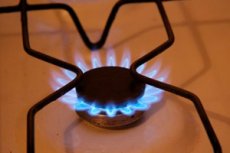Domestic gas vapor poisoning
Last reviewed: 11.09.2024

All iLive content is medically reviewed or fact checked to ensure as much factual accuracy as possible.
We have strict sourcing guidelines and only link to reputable media sites, academic research institutions and, whenever possible, medically peer reviewed studies. Note that the numbers in parentheses ([1], [2], etc.) are clickable links to these studies.
If you feel that any of our content is inaccurate, out-of-date, or otherwise questionable, please select it and press Ctrl + Enter.

Methane is the most common household gas. It is used during cooking and at gas stations as a cheap fuel. The gas is odorless and completely transparent. Ingestion of this substance is extremely dangerous and can be fatal.
One of the properties of the gas is that it easily penetrates the blood-brain barrier, affecting the brain, CNS and depressing the respiratory organs. The vapors of the substance cause oxygen deprivation.
Symptoms of the domestic gas poisoning
There are four degrees of severity of gas poisoning, which differ in their symptomatology:
- Mild - headache, general weakness, dizziness, drowsiness, lacrimation, painful sensations in the heart, shortness of breath.
- Medium - impaired coordination of movements, central nervous system depression, rapid pulse, collapse.
- Severe - loss of consciousness, brain and heart muscle damage, pulmonary edema.
- Instant intoxication - asphyxia, loss of consciousness, cardiac arrest.
One of the first symptoms of poisoning is a nagging, dull headache with no specific localization. Another sign is chest pain, dizziness, lack of coordination, shaky gait. Increasing intoxication is manifested by confusion, nausea and uncontrollable vomiting.
Treatment of the domestic gas poisoning
Gas injuries develop very quickly, and it can take several minutes from onset to unconsciousness. Therefore, it is very important to provide proper first aid to the victim before the arrival of medical personnel.
- The patient is taken out to fresh air, free from squeezing clothes.
- A cold compress should be applied to the forehead, and a roller under the knees so that the legs are higher than the torso.
- The victim is given a cotton swab soaked in ammonia to smell, rub the extremities and chest area with it.
- If vomiting is observed, the patient is turned on his or her side to prevent choking.
- If breathing is infrequent and intermittent, an artificial respiration procedure is performed.
If the patient's life is no longer threatened, you should give him plenty of water with a sorbent and wait for the arrival of an ambulance.
Specialized treatment in a medical facility may include the following:
- Provide access to fresh air: The victim should be immediately taken to fresh air to prevent further inhalation of poisonous gases.
- Respiratory and cardiovascular checks: Cardiopulmonary resuscitation (CPR) is performed if respiratory or cardiac rhythm is found to be absent.
- Condition Monitoring: The casualty will be continuously monitored with specialized medical devices to assess their condition, including respiratory status, pulse, blood pressure and blood oxygen levels.
- Oxygen therapy: The victim may be connected to oxygen therapy to ensure adequate oxygen levels in the blood and tissues.
- Treatment of complications: Doctors can provide treatment for complications resulting from poisoning, such as respiratory burns, pulmonary edema, and provide support for organ function if affected.
- Maintenance of vital functions: It is important to ensure that the casualty maintains vital bodily functions throughout treatment and care.

